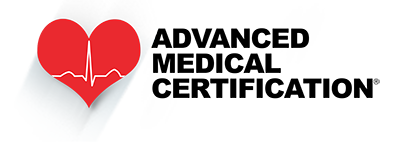One & Two Rescuer BLS for Children
One-Rescuer BLS for Children
If you are alone with a child at the scene, do the following:
- Tap and talk loudly to the child to determine if they are responsive.
- If the child does not respond and is not breathing (or only gasping), yell for help. If someone answers, send them to call 911/EMS and to get an AED.
- Assess for breathing while simultaneously checking for the child’s carotid pulse (on the side of the neck) or femoral pulse (on the inner thigh in the crease between their leg and groin) for 5 but no more than 10 seconds.If you cannot feel a pulse (or if you are unsure), begin CPR by doing 30 compressions followed by two breaths. If you can feel a pulse but the pulse rate is less than 60 beats per minute, you should begin CPR. This rate is too slow for a child.
- If you do not feel a pulse, start CPR with 30 compressions followed by two breaths. If you feel a weak pulse, which is generally less than 60 beats per minute (too slow even for a child), start with CPR.
- After doing CPR for about two minutes (usually about five cycles of 30 compressions and two breaths), and if other help has not arrived, call EMS while staying with the child. The ILCOR emphasizes that cell phones are available everywhere now and most have a built-in speakerphone. Get an AED if you know where one is.
- Use and follow AED prompts when available while continuing CPR until EMS arrives or until the child’s condition normalizes.
Two-Rescuer BLS for Children
If you are not alone with a child at the scene, do the following:
- Tap and talk loudly at the child to determine if they are responsive.
- If the child does not respond and is not breathing (or if only gasping), have the second rescuer call 911/EMS and get an AED. (The ILCOR emphasizes that cell phones are available everywhere now and most have a built-in speakerphone, so you or the second rescuer can call 911/EMS without leaving the scene).
- Assess for breathing while simultaneously checking for the child’s carotid pulse (on the side of the neck) or femoral pulse (on the inner thigh in the crease between their leg and groin) for 5 but no more than 10 seconds.
- If you cannot feel a pulse (or if you are unsure), begin CPR by doing 15 compressions followed by two breaths. If you can feel a pulse but the pulse rate is less than 60 beats per minute, you should begin CPR. This rate is too slow for a child.
- When the second rescuer returns, begin doing CPR by performing 15 compressions by one rescuer and two breaths by the second rescuer.
- Use and follow AED prompts when available while continuing CPR until EMS arrives or until the child’s condition normalizes.
